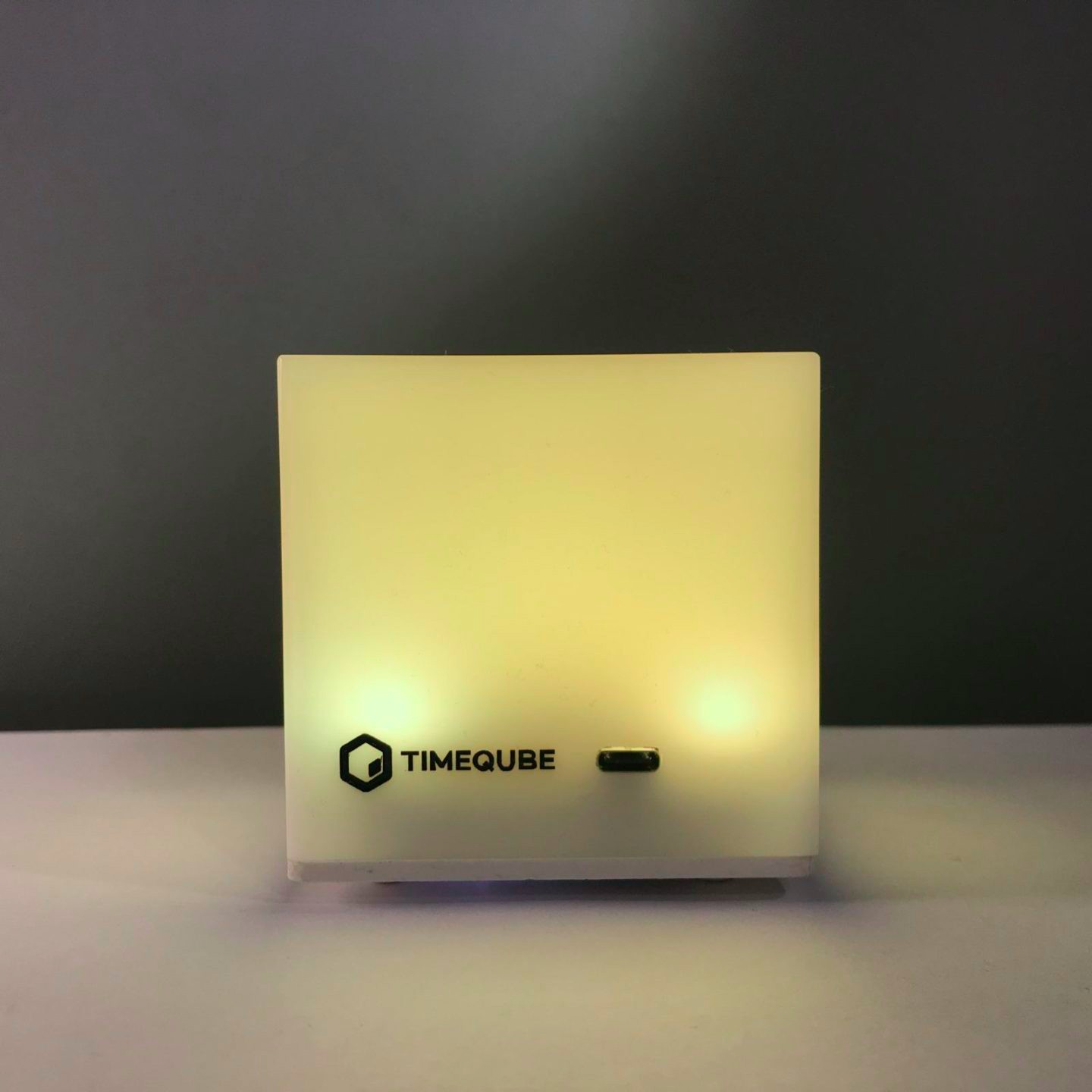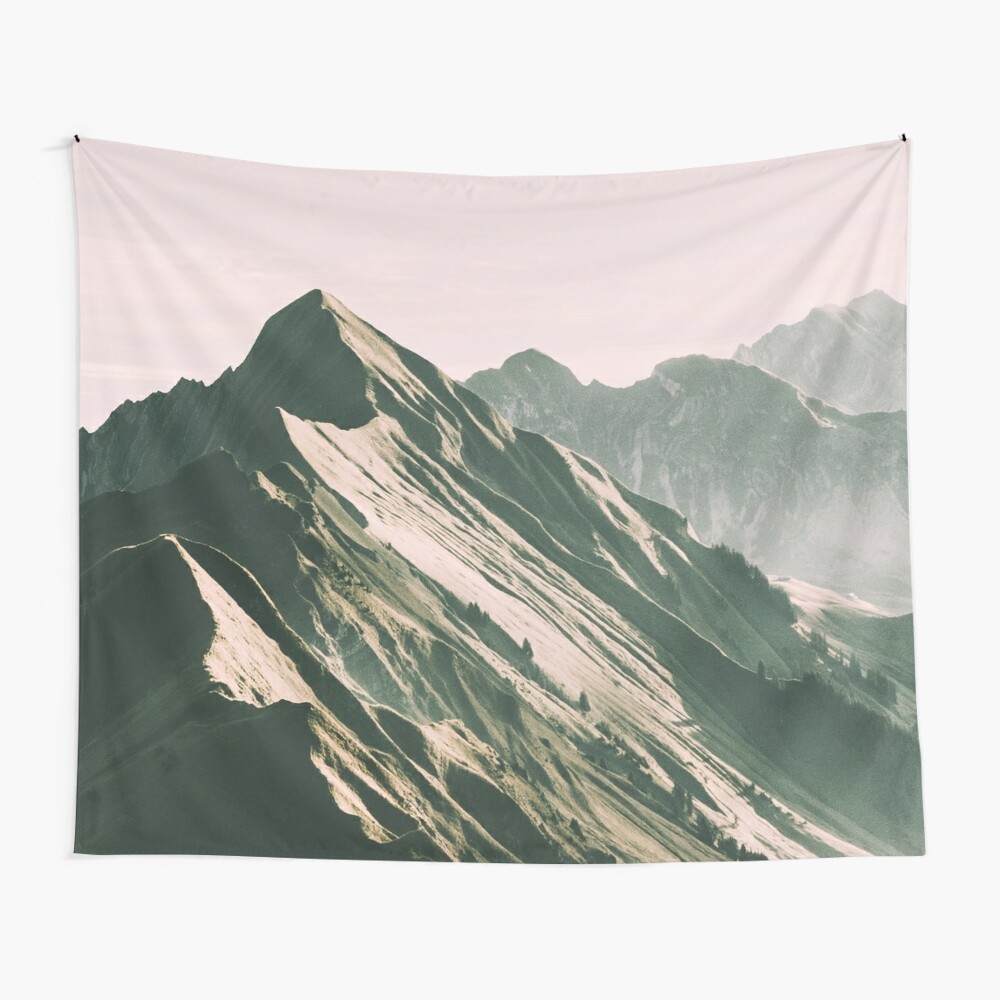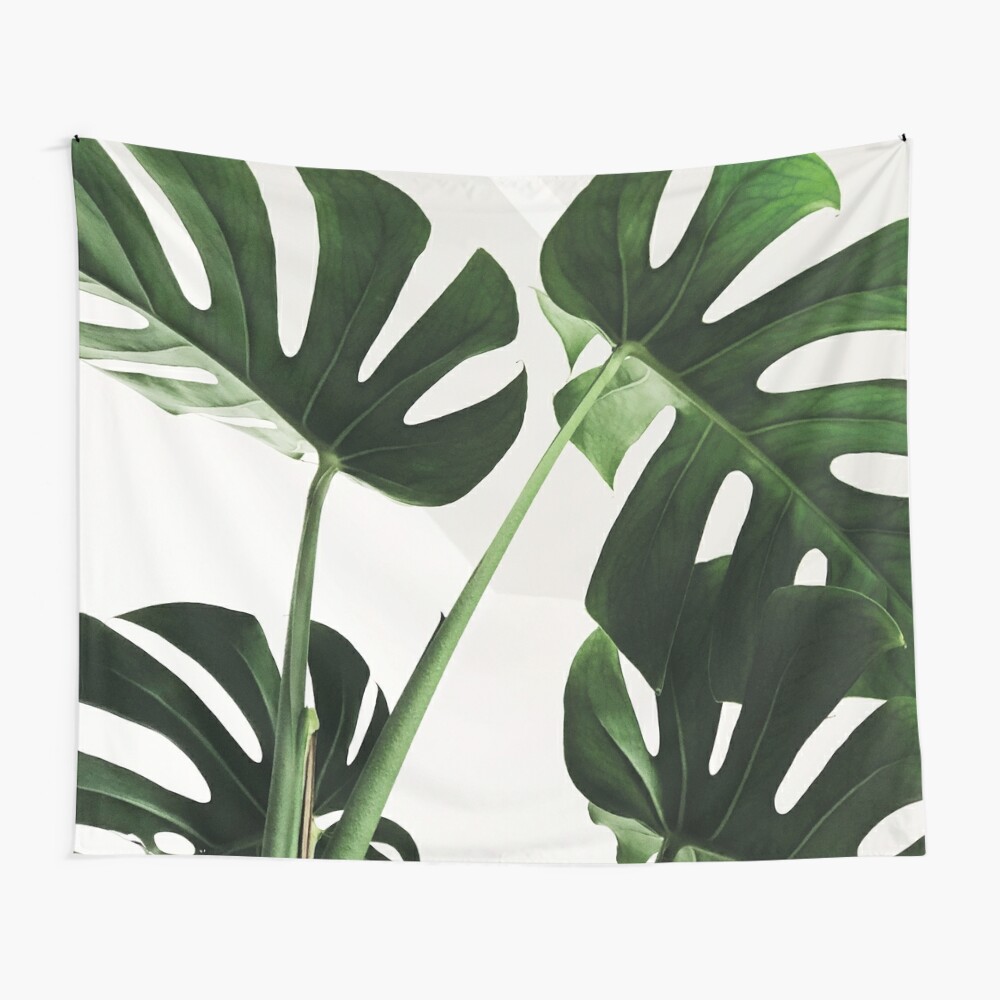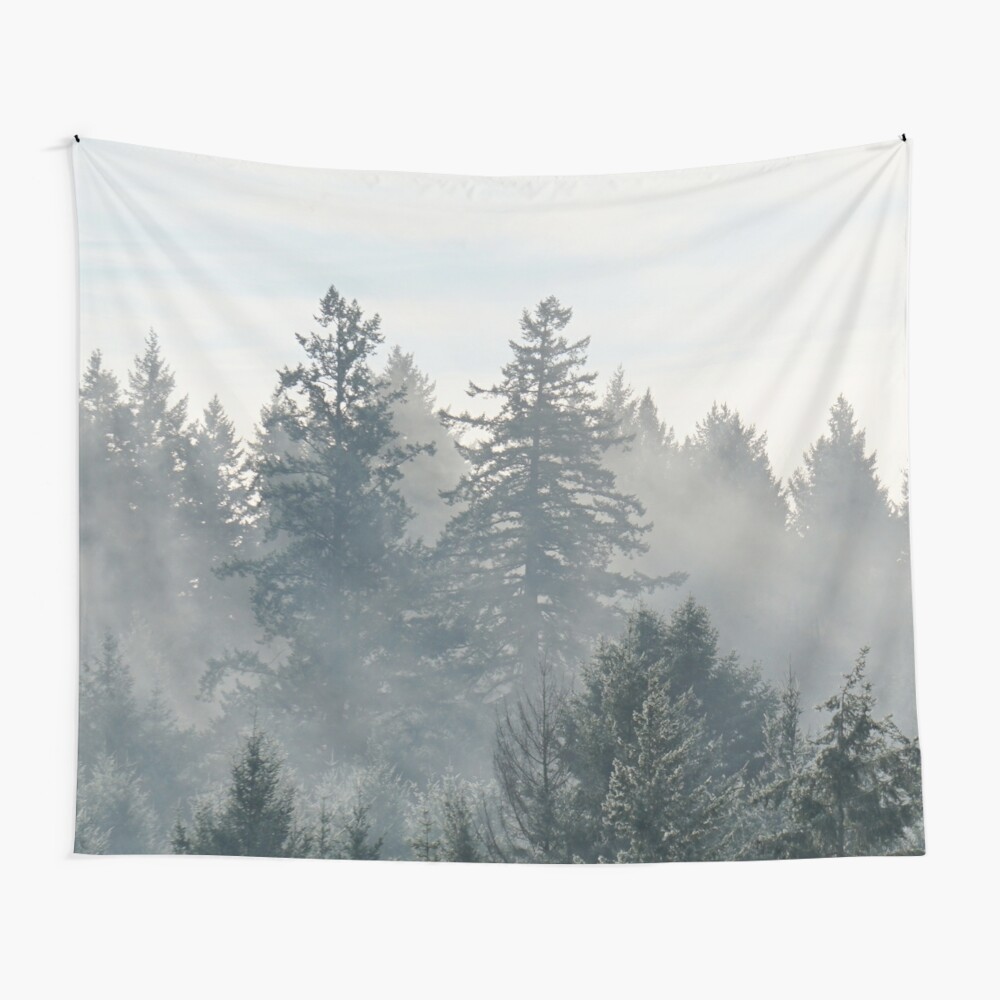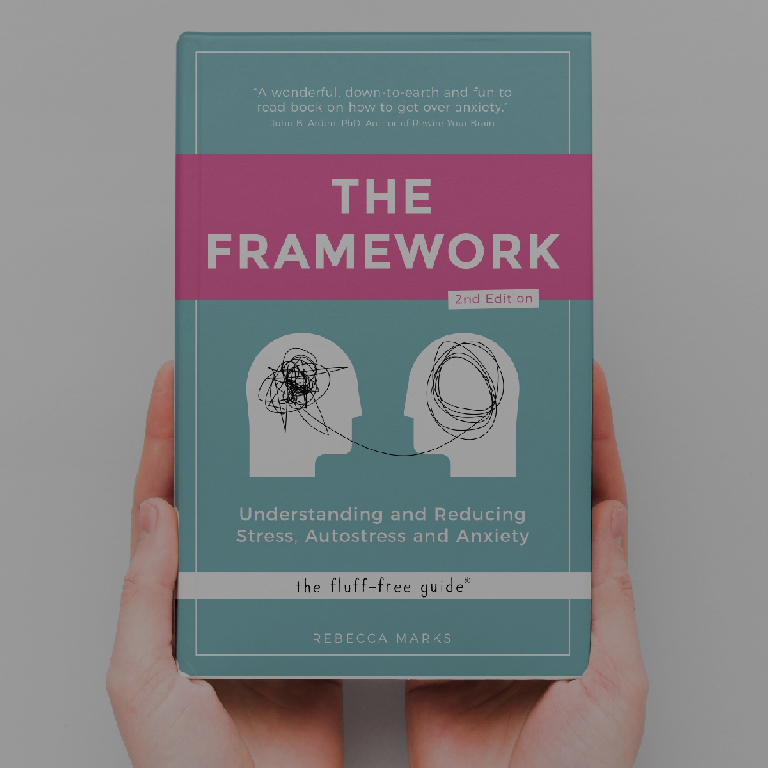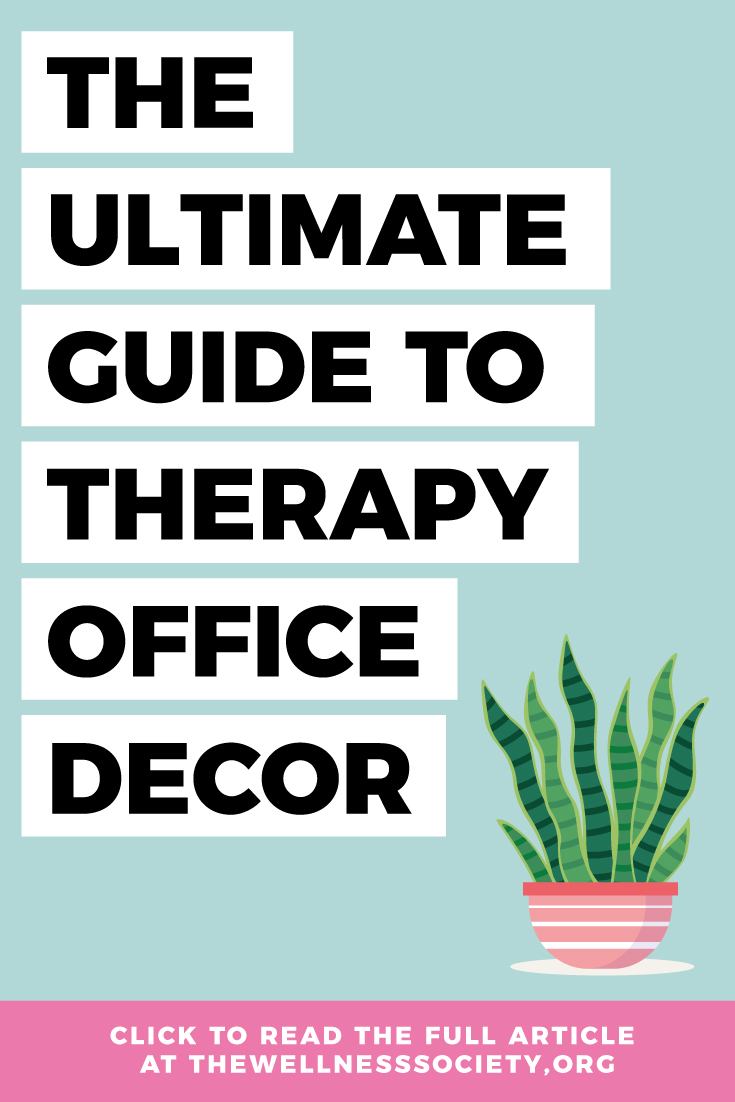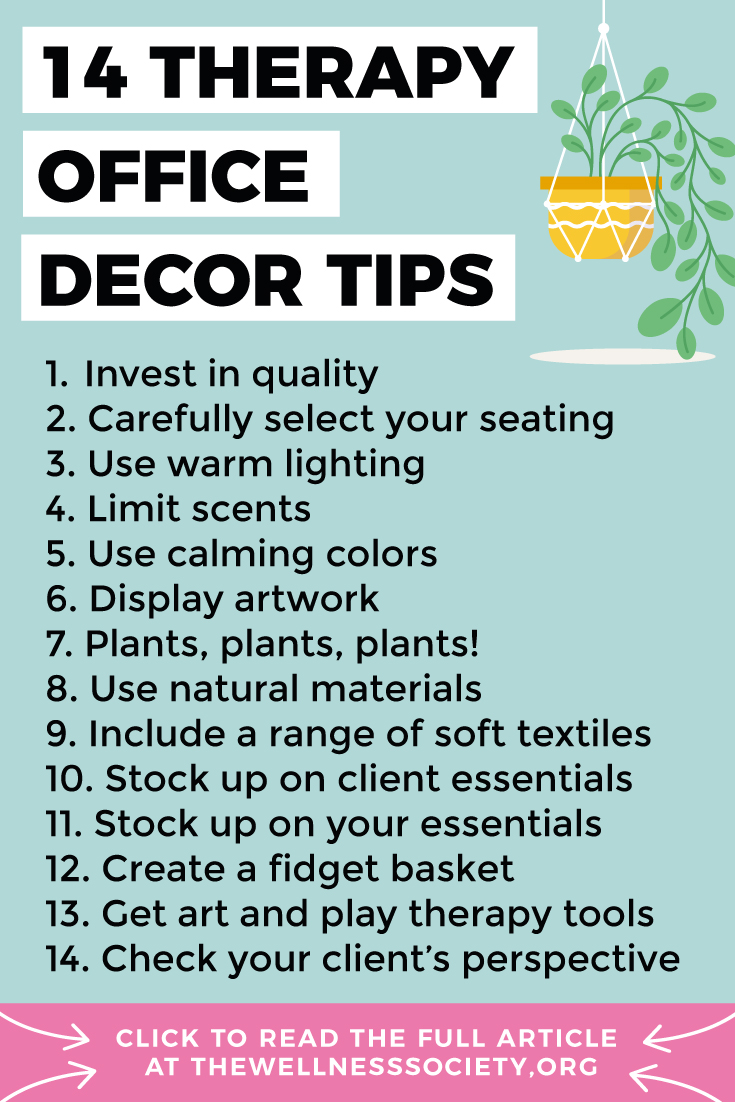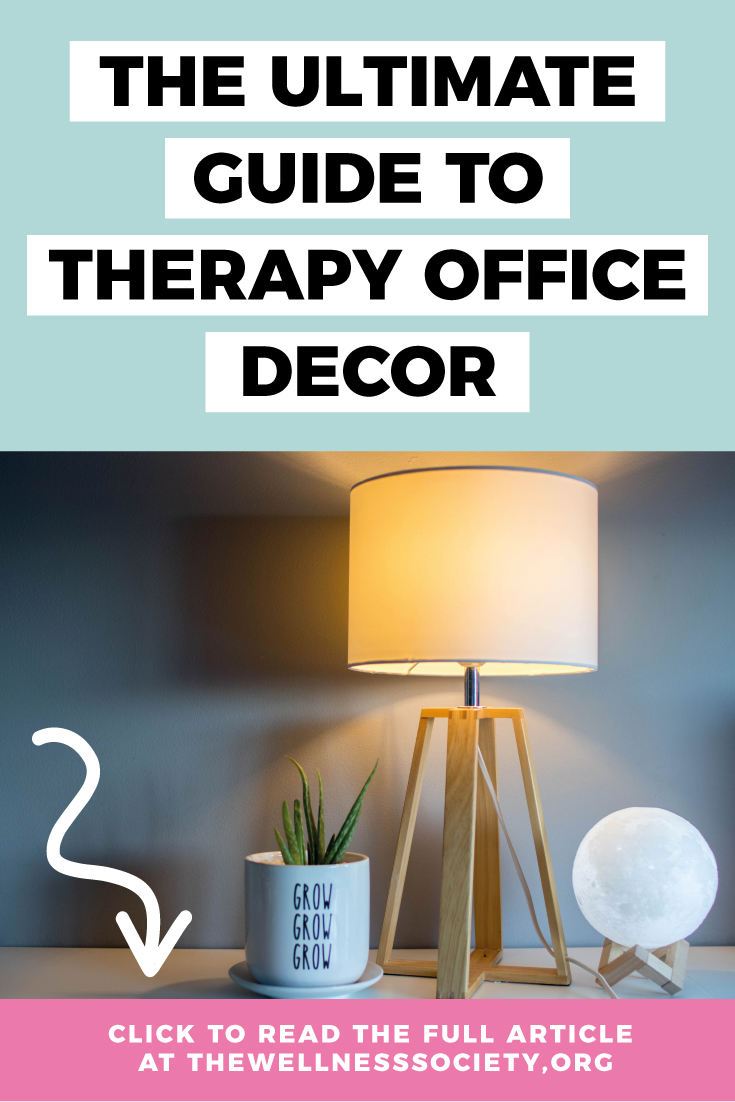If you’re looking for tips on how to create a cozy, welcoming therapy office, you’re in the right place!
Deciding on your therapy office décor can be an enjoyable start to your career. It’s also an important task to invest some time in – your office environment sets the tone for your work with clients. You want to ensure they feel comfortable in the space you work together.
So, without further ado, here are 14 therapy office décor tips for a truly calming therapist office.
1. Invest in Quality
It's important to get the best quality décor that you can afford. Doing so sets the tone for both the quality and seriousness of your services – you can think of it as part of your branding.
2. Carefully Select Your Seating
Have a few comfortable seating options.
Get a standard height couch or loveseat – some people struggle to get up off a low couch or an Ikea style chair. It's important to keep accessibility in mind. Is your furniture light enough to move for a client in a wheelchair? Is it suitable for people in larger bodies? (Some trendy chairs have weight limits of around 200 pounds.)
Opt for washable/easily cleanable fabrics such as microfibre, polyester, linen and leather.
3. Use Warm Lighting
Please, please, please – steer clear of fluorescent lighting!
The color temperature of light is measured in degrees Kelvin (K). The lower the K, the warmer the light.
For warm lighting, choose anything 3000K or lower. It’s often labelled “soft white” or “warm white”.
Avoid “cool white”, “daylight” and anything 4000K and above.
Having a variety of desk and floor lamps with warm light bulbs is a simple way to create a cozy atmosphere!
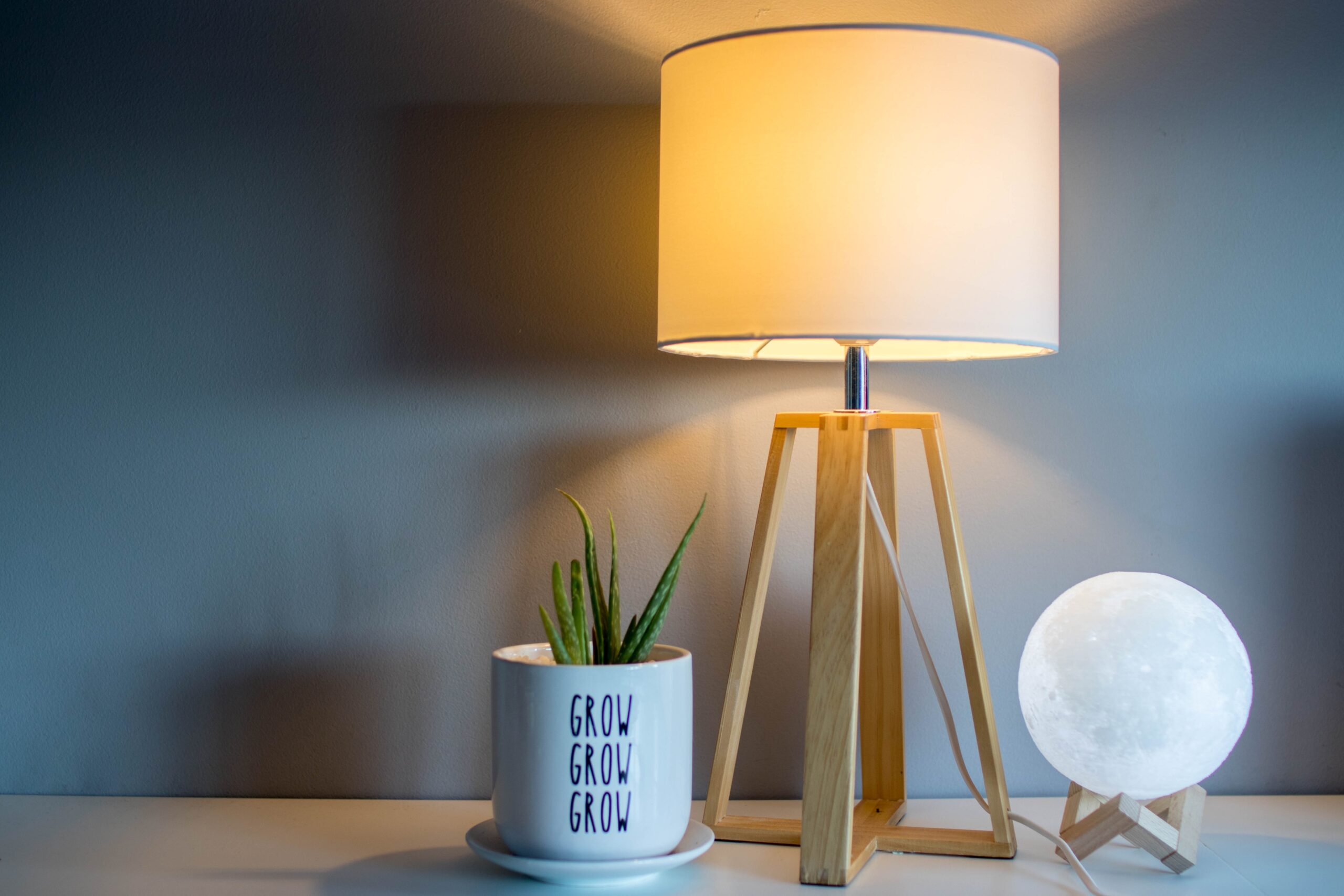
A functional form of lighting you can add to your therapy office is Timeqube, a colour-coded timer that makes keeping track of time effortless and intuitive.
Both therapist and client can orient to how much time is left without getting lost in clock-tracking. You can even set it for different session lengths to suit your needs.
For those with ADHD in particular, Timeqube offers a simple, visual way to stay on track without the mental burden of constantly monitoring time.
4. Limit Scents
While scents can be pleasant, they can be a trigger not just for allergies, but also for (sometimes distressing) memories.
Your therapy office should be a comfortable space for people who are highly sensitive. As well as using warm lighting, limiting scents can help sensitive people feel more at ease.
To keep the air fresh, be sure to open your windows regularly. You may also wish to invest in a quiet air purifier.
5. Use Calming Colors for a Relaxing Atmosphere
Studies have found that certain colors are more physiologically and psychologically stimulating than others.
Certain researchers have suggested there’s a U-shaped relationship between color wavelength and arousal effects; longer wavelength colors (red, orange, yellow) feel arousing, whereas shorter wavelength colors (green, blue, indigo) feel relaxing.
You really can’t go wrong with green and blue! Be sure to choose shades with a low rather than high saturation (a pale rather than a bright green). Sage green is a beautiful, calming paint color.
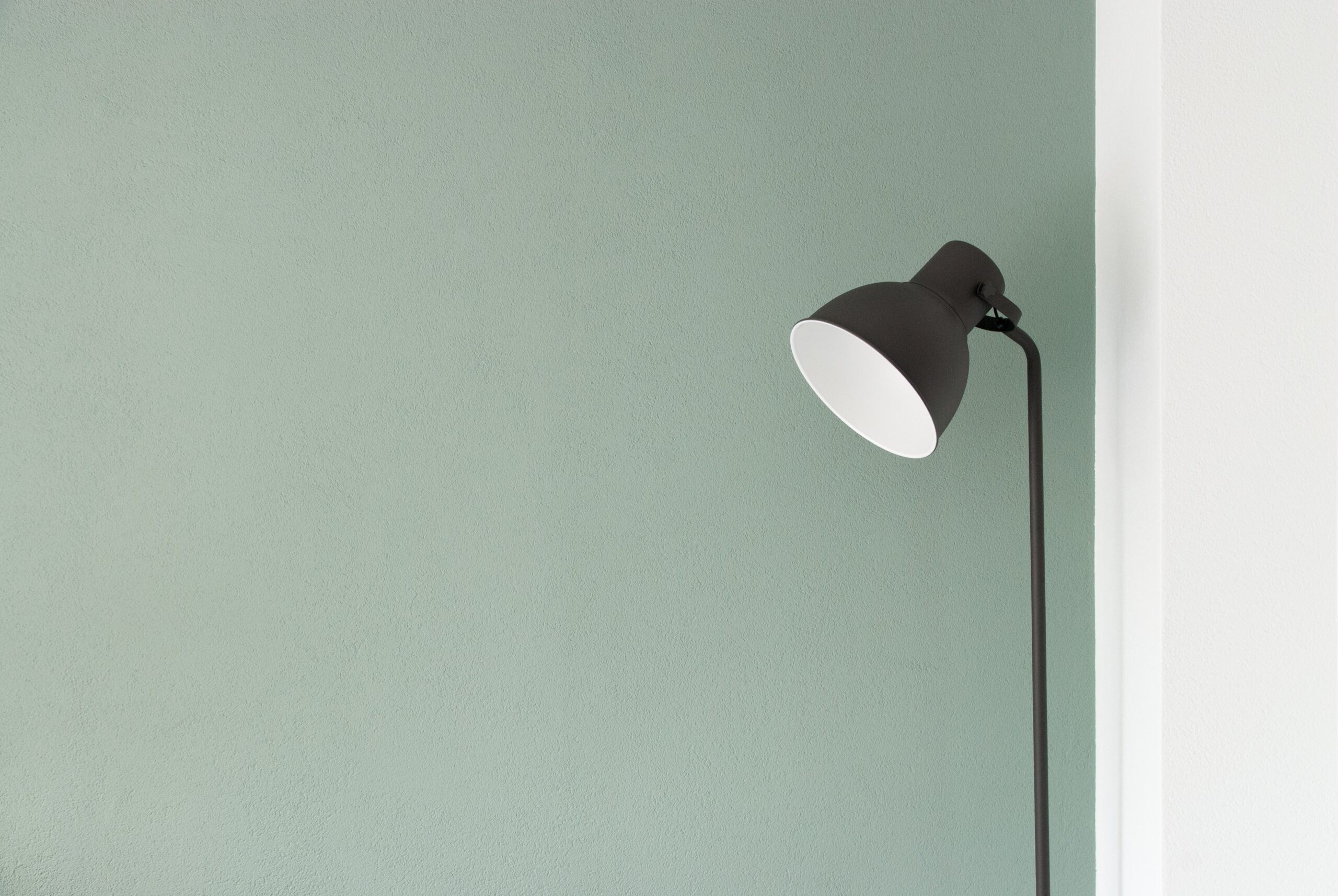
Sage Green Paint
Whatever you do, steer clear of red, orange, yellow and neon shades, or use them to a minimum as an accent color on a décor item, if you must.
Similarly, opt for “quiet” patterns rather than bold graphic patterns. For example, simple stripes rather than a multi-colored abstract art style cushion.
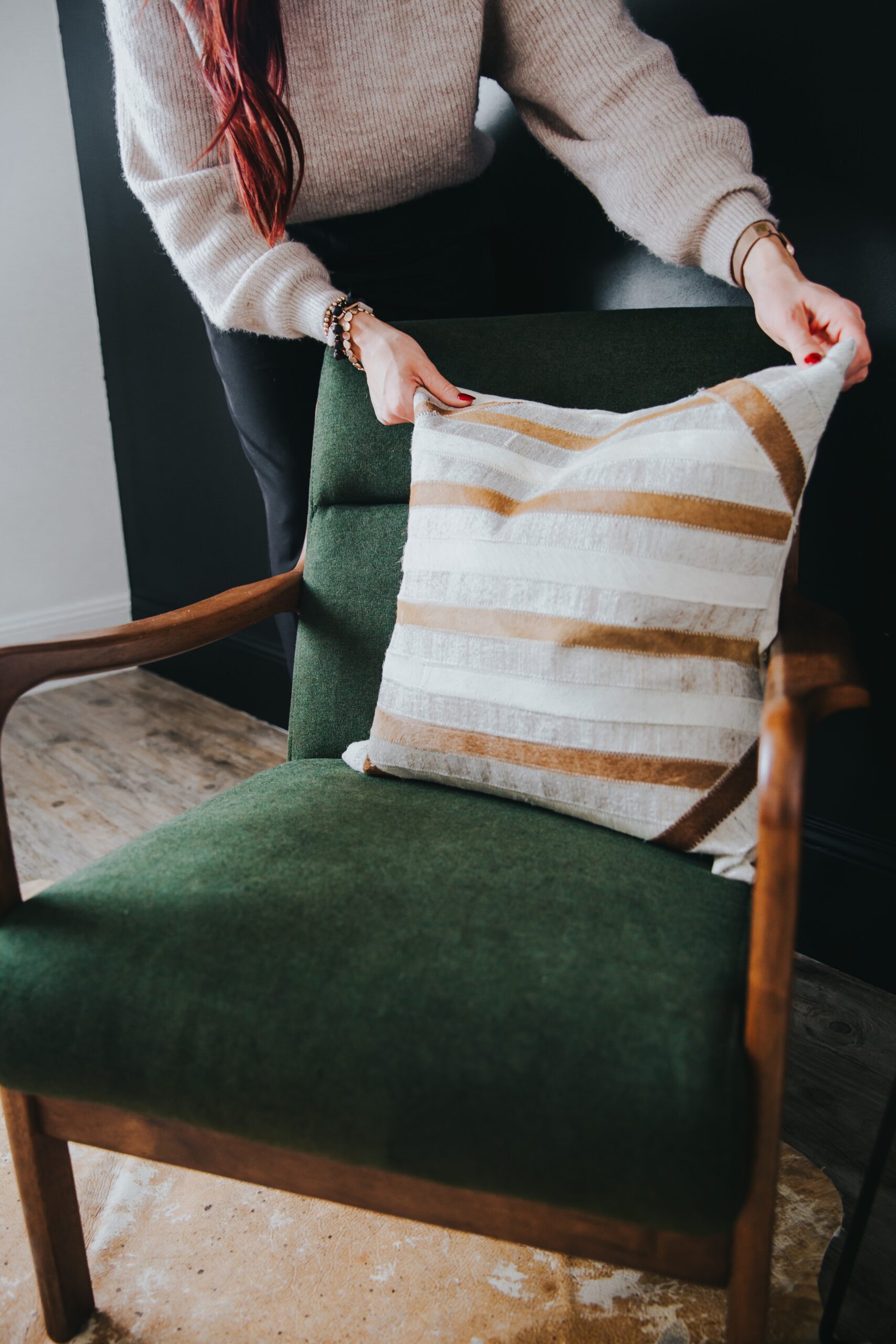
6. Display Artwork
As well as making your space more aesthetically interesting, artwork can help to create a calmer, cozier atmosphere. It can also provide a talking point. We offer two free printable wall art bundles which include a wide range of sizes to print.
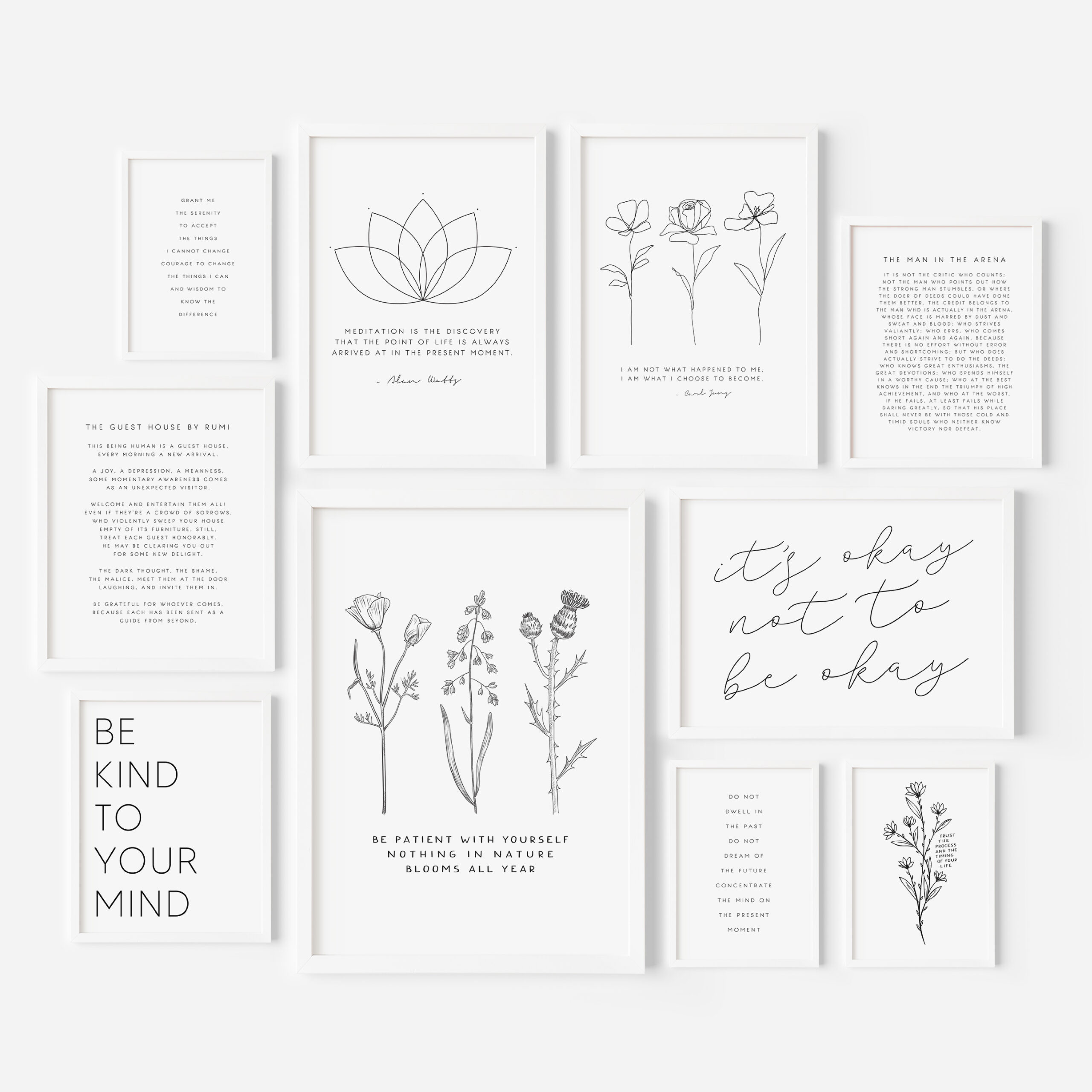
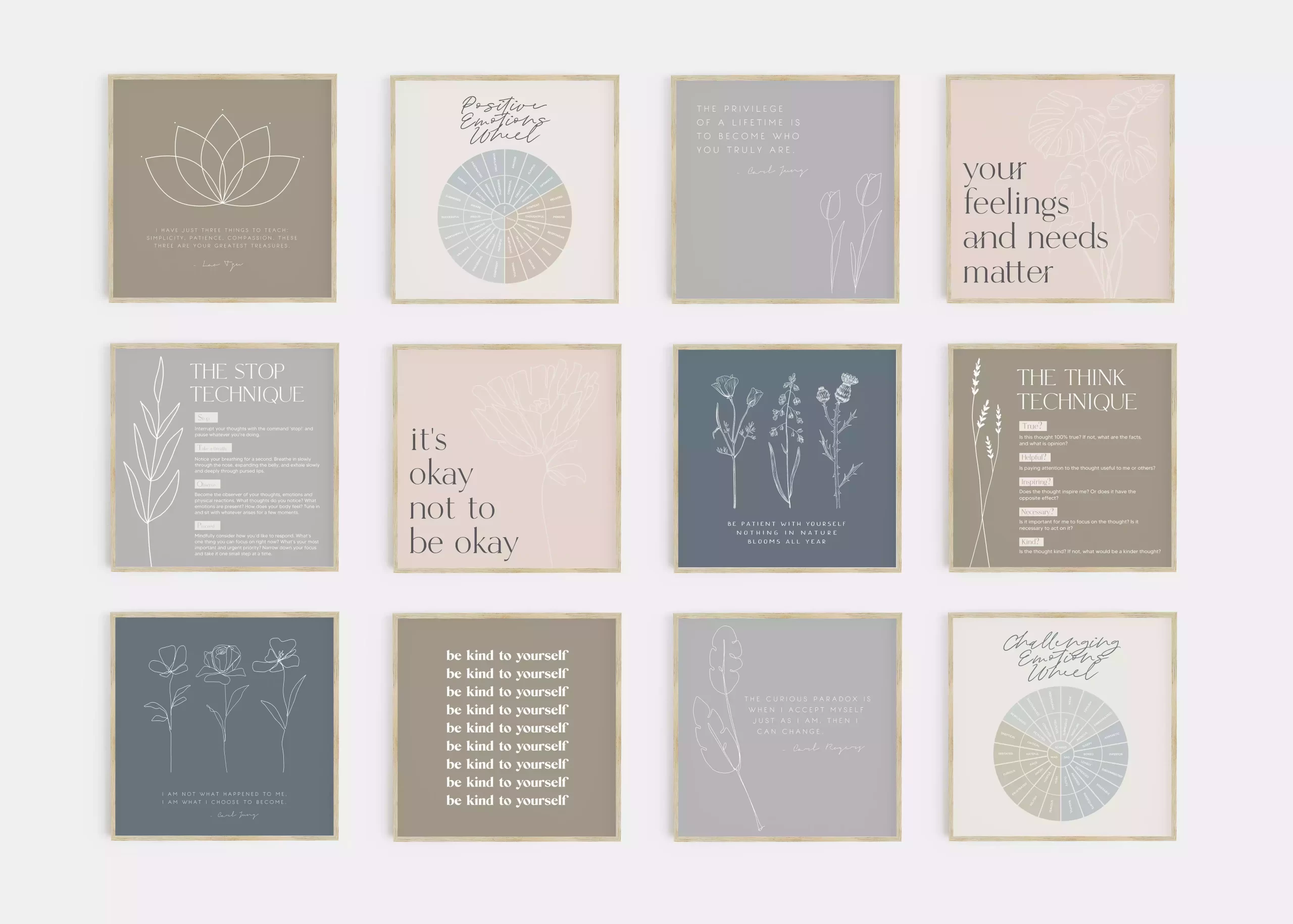
Printable artwork tends to be the most affordable. Download your files then take them on a USB stick or email them to your local print shop. Alternatively, you can print on canvas at CVS or Walgreens (during their 70% off sale would be great timing!).
A balance of professional and personal is key to welcoming therapy office décor. Wall hangings allow you to implement this – you can display your licenses and framed degrees alongside artwork which shows off your personality.
7. Plants, Plants, Plants!
Ideally, you want some real plants alongside your artwork!
Some low-maintenance indoor plants include:
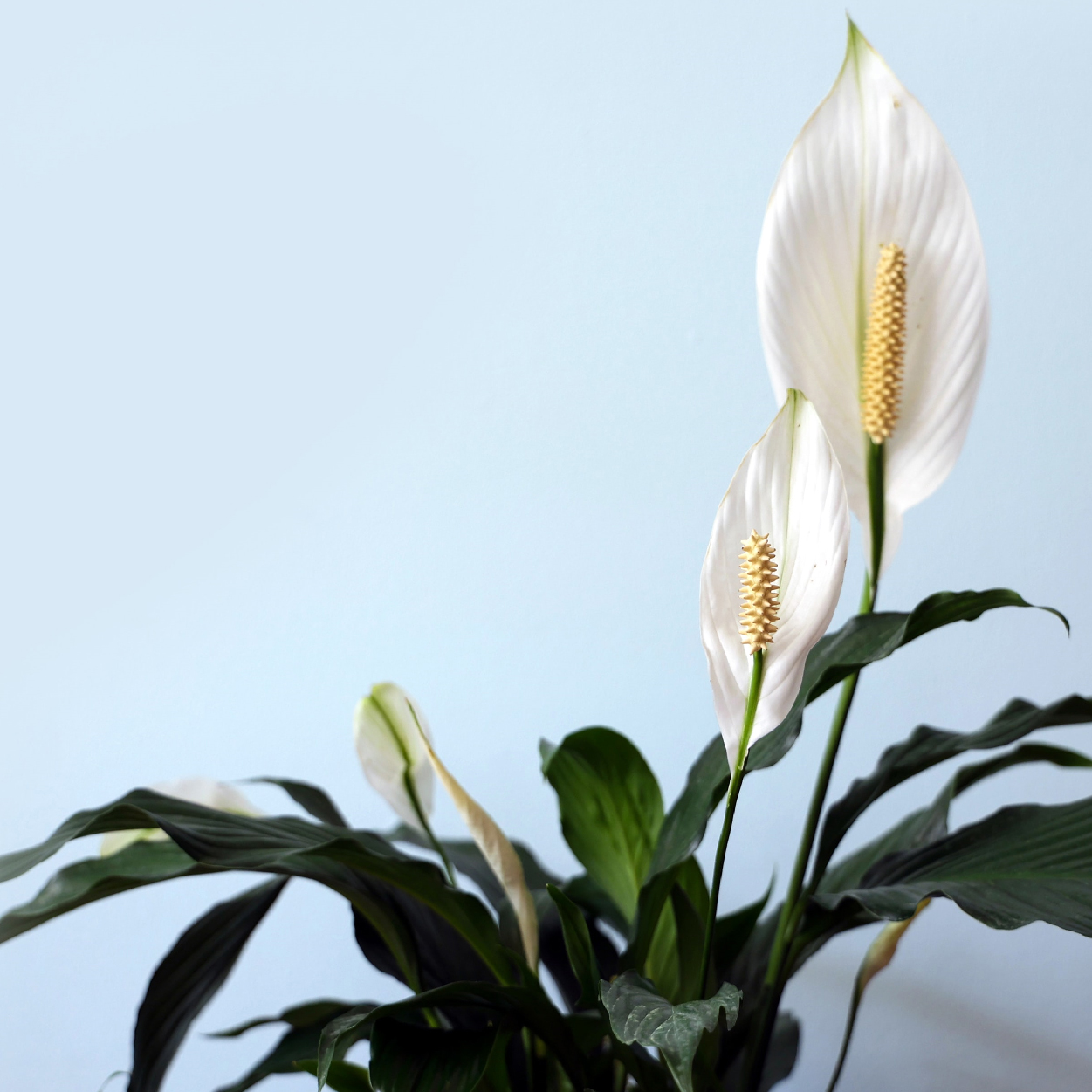
Peace Lily
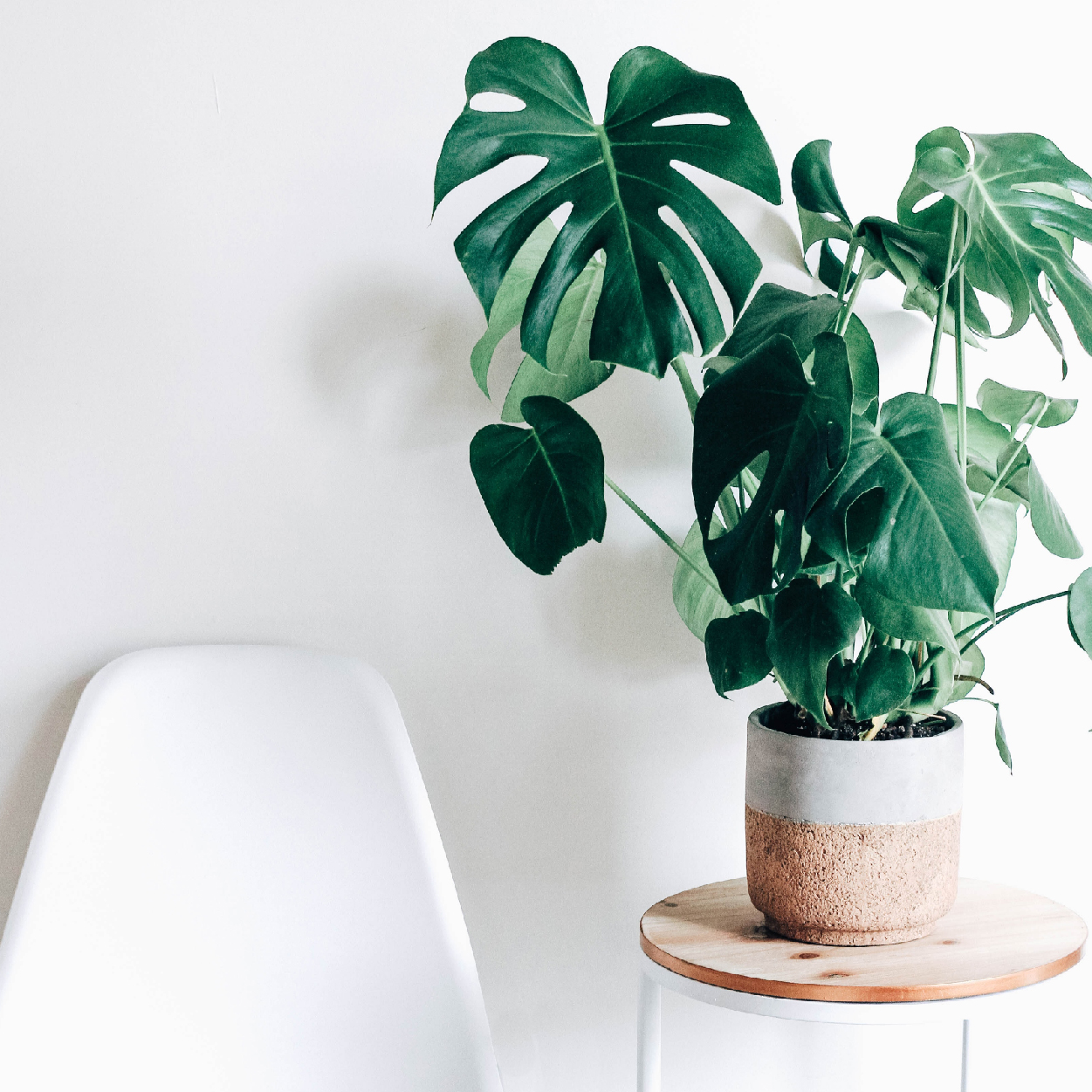
Monstera Plant
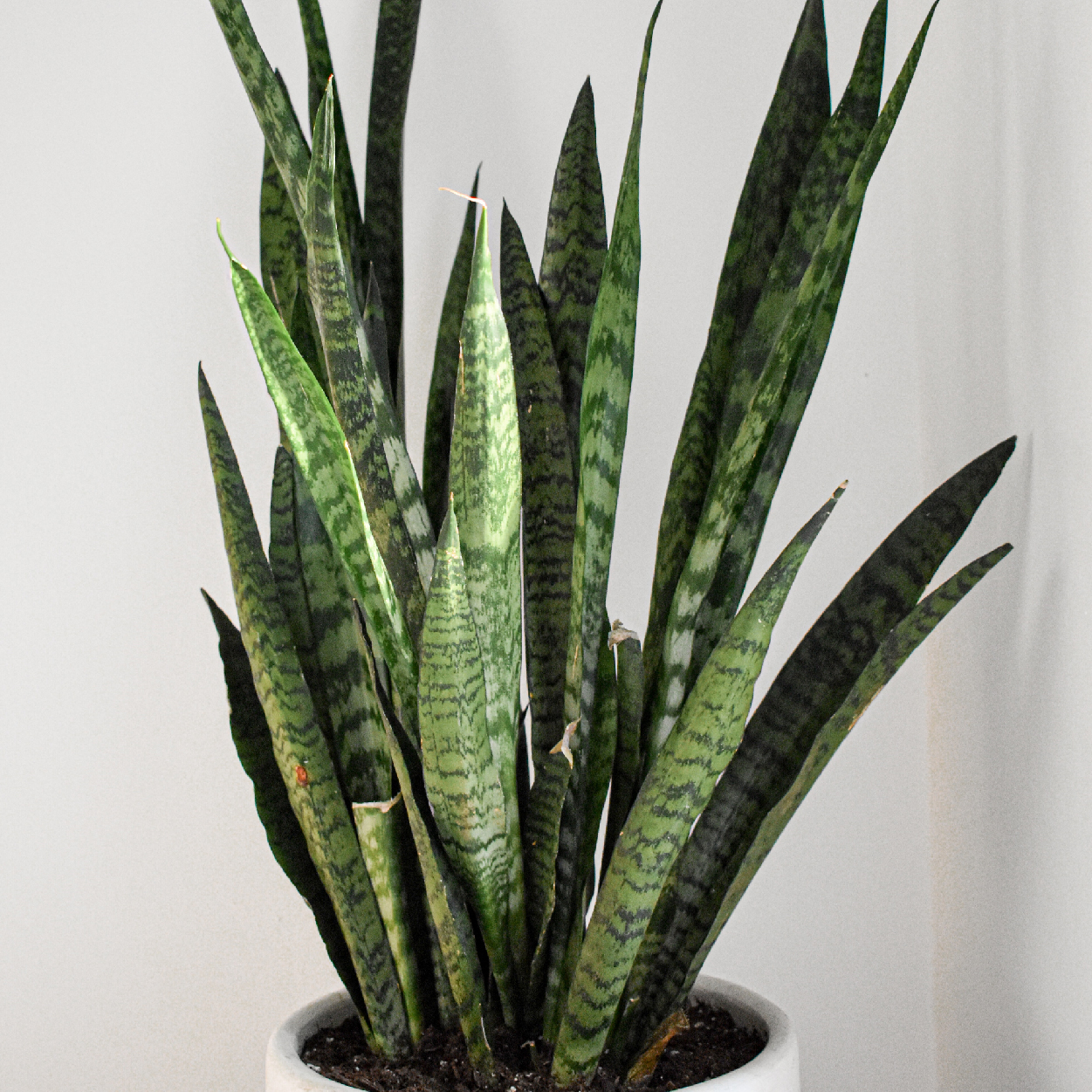
Snake Plant
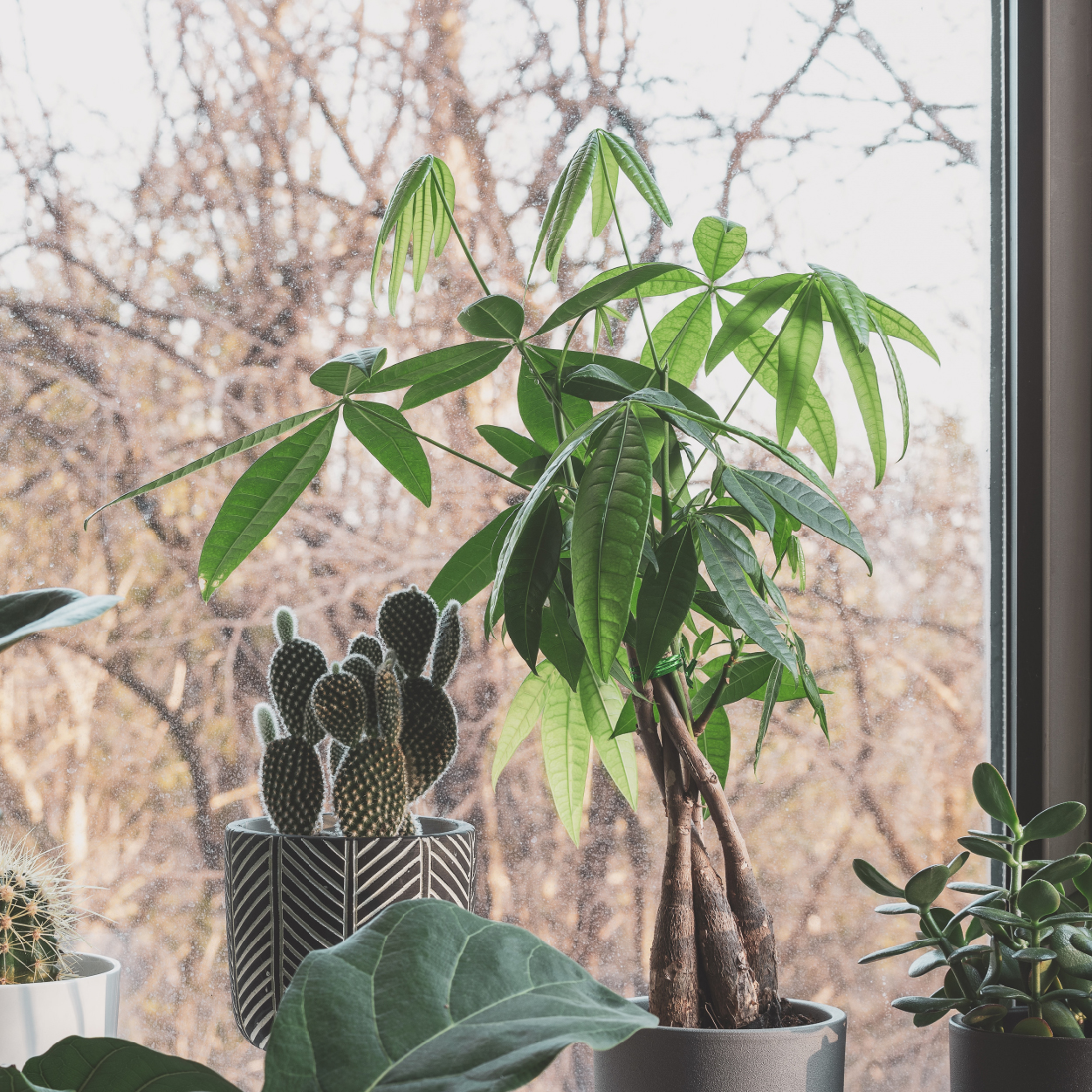
Money Tree
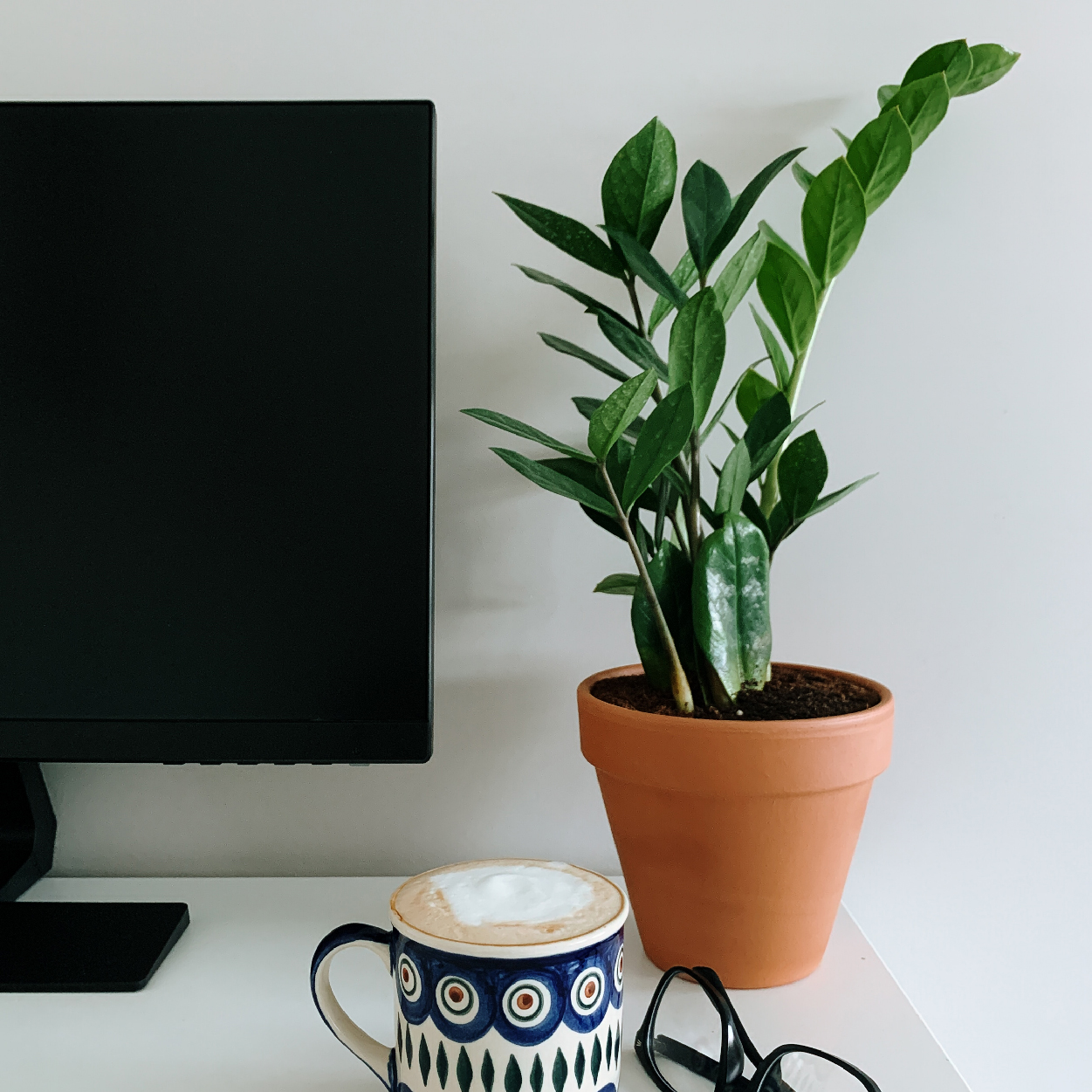
ZZ Plant
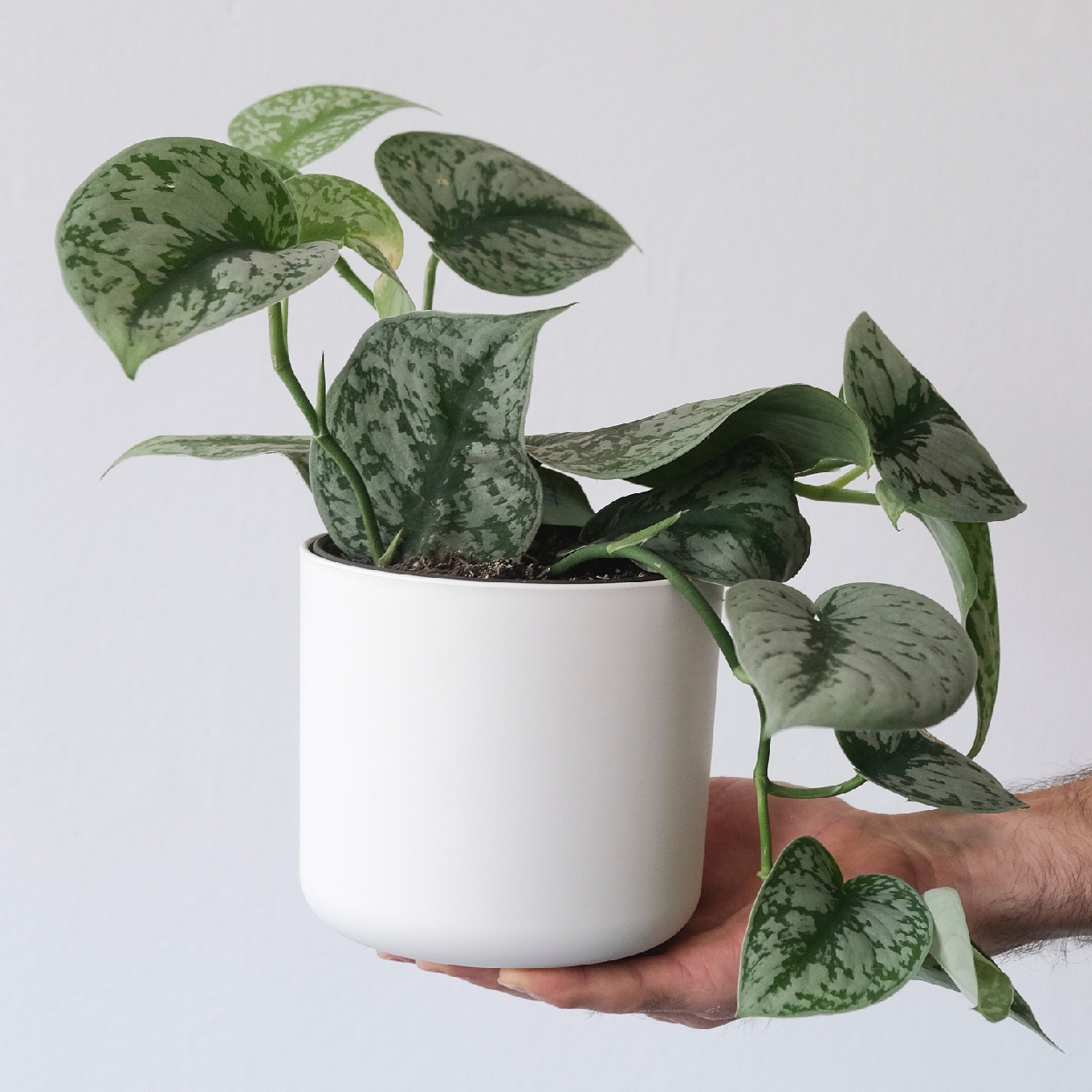
Pothos
If you have a windowless space, you might opt for some high-quality fake plants and some kind of nature tapestry.
Redbubble has plenty:
A nature tapestry can also act as a talking point. You can share therapy metaphors such as the ‘Path Up the Mountain’ used in Acceptance and Commitment Therapy (ACT):
“Imagine you’re hiking in the mountains. You’re aware of how mountain trails are usually built, especially if the slopes are steep. These trails often wind back and forth and may have "switchbacks" which require you to walk back and forth, or even drop back to a lower level you had previously reached.“If I asked you at various points during your hike to evaluate how well you were doing in reaching the mountaintop, you’d likely give different answers at each point.
“If you were in a section of the trail with switchbacks, you might say that things were not going well and that you would never reach the top. However, if you were in an open area where you could see the mountaintop and the path leading up to it, you might say that things were going very well.
“Now, imagine that we’re across the valley with binoculars, observing people hiking on this trail. If we were asked how they were doing, we would always have a positive progress report because we can see that the overall direction of the trail, not just how it looks at a given moment, is the key to progress. We can see that following this winding trail is what ultimately leads to the top of the mountain.”
8. Use Natural Materials
Another way to create a cozy office is to use natural materials such as wood and stone.
Libby Burton, professor of Sustainable Building Design and Wellbeing at the University of Warwick, notes: “Natural elements in the built environment help people recover from stress and mental fatigue and generally lift their mood.”
9. Include a Range of Soft Textiles
Using a variety of textiles helps create visual interest and gives your space a warm, cozy feel.
You could get:
- Couch cushions
- A rug
- A soft washable blanket to pop on the couch
- A macrame wall hanging
- Curtains
10. Stock Up on Client Essentials
Client essentials include: tissues, a fresh clean glass and pitcher of water, coffee, tea, and a water dispenser (if they’re in your budget).
A mobile charging station would be a bonus nice-to-have!
11. Stock Up on Your Essentials
What do you need to take care of yourself?
- A planner/agenda book?
- A healthy snack drawer?
- A good water bottle?
- Paracetamol supplies?
- A comfortable place to nap?
- A journal?
If you’re interested in journaling tools to help prevent compassion fatigue and burnout, be sure to check out The Professional’s Positive Emotions Journal.
Example prompts include:
- I could support my wellbeing by...
- It could help to talk to someone about...
- An intervention that went well was...
- A client who made a small step was...
Learn more about The Professional’s Mental Wellbeing Toolkit here.
12. Create a Fidget Basket
Tangles, stress balls, and pop-its can help children and people with anxiety and ADHD feel more at ease.
Make sure they they’re contained in some sort of basket/box – it’s important to avoid a cluttered atmosphere. Seeing clutter makes it harder for our brains to focus and ruins a cozy environment.
13. Get Some Art and Play Therapy Tools
Similarly, you can have a box of art and play therapy supplies at hand, such as:
- Colored pencils
- Crayons (Crayola Twistables don’t break!)
- Coloring sheets (head to our Free Tools Library to download some for free)
- Different kinds of paper
- Kinetic sand (it’s much easier to clean up than playdoh)
- Uno
- Jenga
- Therapy games such as The Talking, Feeling and Doing Game, Mad Dragon, and Totika
14. Check Your Client’s Perspective
Lastly, it’s a good idea to spend some time in your client’s seating to check the vibe.
- Can they monitor the time?
- Can they see the calming artwork, or is it behind them?
- How much space is there between you and the client?
- Is the seating at a comfortable offset angle, or is it too squarely in front of you?
- Are there any obstacles in the pathway to the door?
- Is there anything in the room that might be too distracting?
Summary
How do you decorate a therapy office?
Here are some things to consider:
- Invest in quality
- Carefully select your seating
- Use warm lighting
- Limit scents
- Use calming colors for a relaxing atmosphere
- Display artwork
- Plants, plants, plants!
- Use natural materials
- Include a range of soft textiles
- Stock up on client essentials
- Stock up on your essentials
- Create a fidget basket
- Get some art and play therapy tools
- Check your client’s perspective
We hope this was helpful!
Pin For Later


